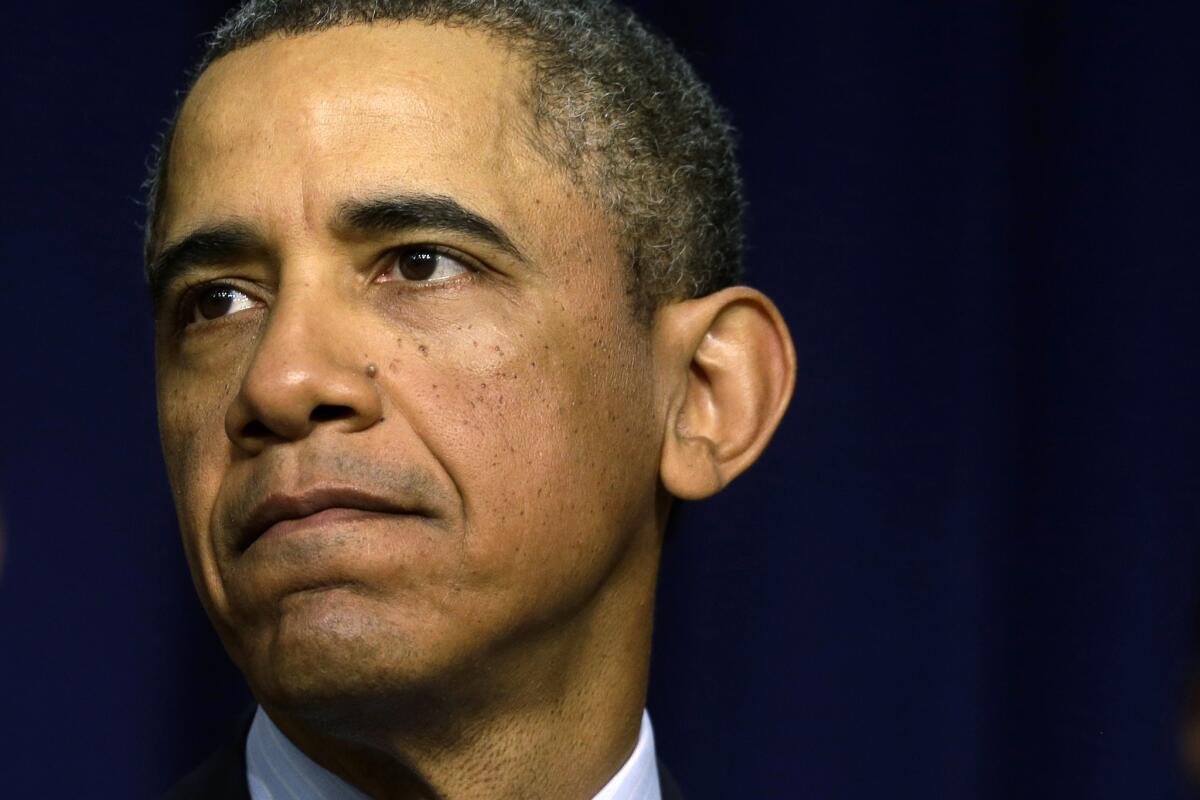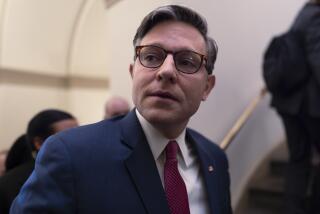McManus: D.C. doubles down on the sequester

The sequester, those $85 billion in across-the-board spending cuts scheduled to hit the federal government on March 1, was designed to be stupid.
In 2011, when President Obama proposed the scheme and both parties in Congress embraced it, their thinking was: With a whole year to work on a deal, surely we can figure out a way to avoid a catastrophe.
What Washington did they think they were living in?
With no negotiations under way, it’s virtually certain that on March 1, a long list of federal programs will get slashed. But at this point, the only thing Democrats and Republicans agree on is that the mandatory cuts will hurt the economy, the nation’s security and the well-being of the American people.
So why has there been no serious negotiation to avoid the train wreck we all see coming? One reason is that both sides think the public will side with them and blame the other party.
Obama and the Democrats think they can win the public relations battle because Americans are already on their side. A Pew Research Center poll released last week, for example, found that a big majority of Americans, 76%, agree with Obama’s approach of combining spending cuts with tax increases; only 19% agree with the Republican position that tax increases should be off the table.
But Republicans think it won’t be hard to turn the public against Obama, since he was the one who proposed the sequester in the first place (never mind that they approved the plan). They’ll also insist that the administration is deliberately making the cuts more painful than they need to be. Some in the GOP have even proposed giving Obama more discretion over where to slash, so he can’t complain that his hands are tied.
Both sides have a point. Most Americans do want to cut federal spending in general. But when it comes to individual programs, they want to protect them. The Pew poll found that a majority favored cuts in only one area: foreign aid. Most respondents didn’t want cuts in education, healthcare, unemployment benefits or defense.
That’s why the administration has offered deliberately dramatic forecasts of what spending cuts could mean, from canceled military operations and reduced Border Patrol surveillance to fewer AIDS tests, fewer children in Head Start and even potential meat shortages (because of reduced meat inspections).
And seemingly minor cutbacks can have outsized political impact. When Republicans in Congress shut down the federal government in 1995, the public reacted harshly once vacationers discovered that Yosemite and other national parks were closed. This time, the most painful cut for many people may be at the nation’s airports: If the sequester continues past April 1, the Transportation Security Administration says it will have to cut the number of screeners on duty — meaning waits of an hour or more for passengers. That won’t be pretty.
Still, Republicans hope that by challenging Democrats to come up with spending cuts to match those mandated by the sequester, they can portray their opponents as big spenders unwilling to attack the federal deficit. “Most people agree [with Republicans] that the deficit is one of the reasons the economy can’t get back on track,” said David Winston, a GOP pollster who advises House Speaker John A. Boehner (R-Ohio). “So let’s get to work cutting the deficit. And then we can ask a second question: Do you really want your taxes to go up?”
In short, Republicans think they can turn the sequester into a teachable moment that will draw public opinion to their side. But they face some obvious problems. Most of the public doesn’t agree with them yet.
The White House has been energetic in pressing its case, using a week when Congress was out of town to stage events, including one that surrounded the president with photogenic law enforcement officers. And while Obama is talking to the country, the GOP has so far been talking mostly to the party faithful, making small-bore arguments about who proposed the sequester in the first place.
In the end, there will be some kind of compromise, probably around March 27, when Congress has to pass a law to keep the government operating for the rest of the year. It will probably include spending cuts that approach what the sequester demands, but with more flexibility— and, if Democrats have their way, a longer delay before the cuts kick in.
Tax increases will be a sticking point, of course. Democrats want them; Republicans reject them. But the recent history of budget showdowns suggests the GOP will compromise at the last minute.
But even if we already know roughly how the standoff will end, it’s hard to see how we’ll get there from here. Neither side knows how to defuse the crisis before it happens; neither wants to be the first to offer concessions. “Every time I’ve gotten into one of these high-profile negotiations, you know, it’s my rear end that got burnt,” Boehner told the Associated Press this month. That’s about as perfect a description of political dysfunction as you could want.
Follow Doyle McManus on Twitter @DoyleMcManus
More to Read
A cure for the common opinion
Get thought-provoking perspectives with our weekly newsletter.
You may occasionally receive promotional content from the Los Angeles Times.











